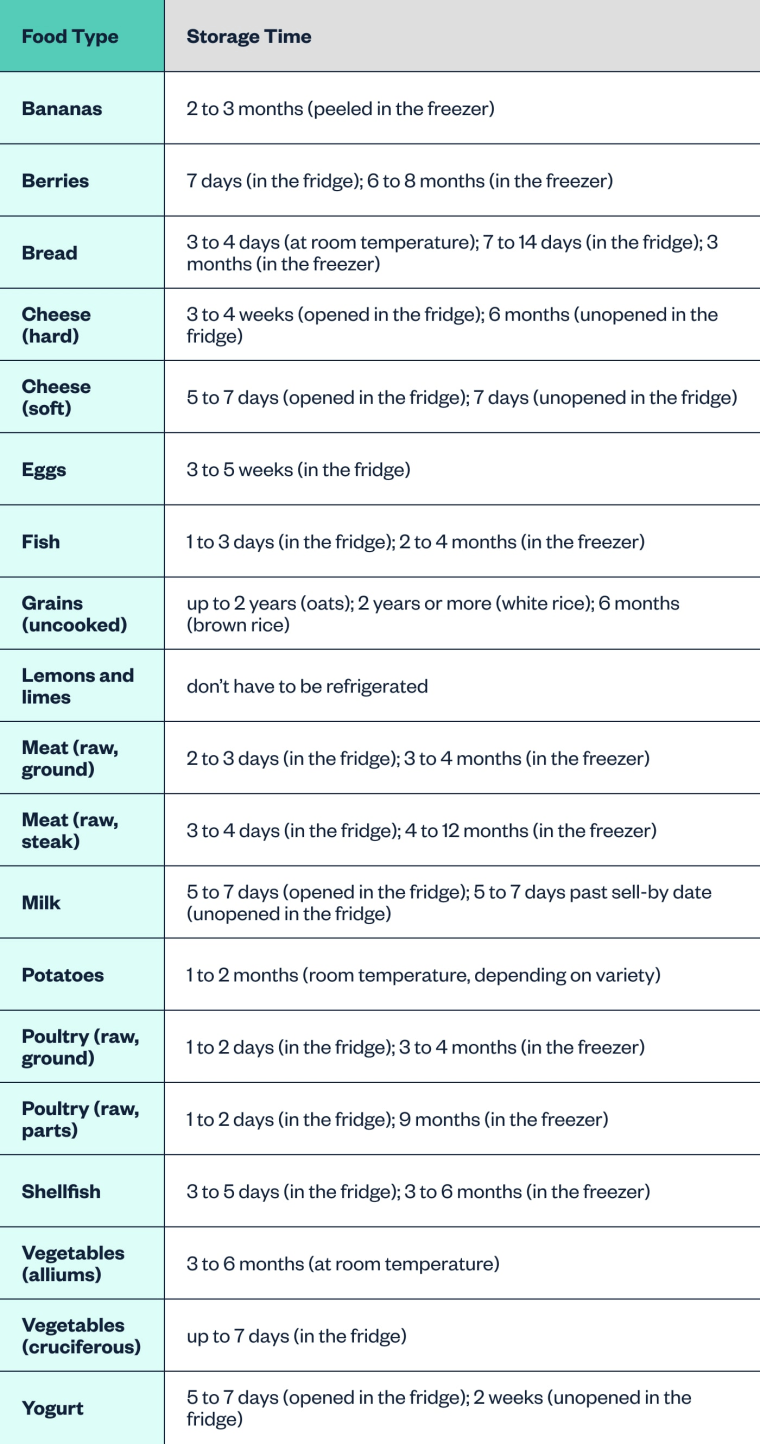
If you store them properly, you can eat eggs, condiments and even some cheeses, past their expiration date, according to experts.
We’ve all probably been there: You pull out your milk from the fridge
only to realize it’s two days past the expiration date. Upon further
inspection, it looks and smells just fine, but instinct tells you it’s
best to toss rather than risk getting sick. While expiration dates help
us stay safe, it’s hard to not wonder if one or even three days past
truly makes a difference.
The truth is that expiration dates largely depend on the type of dood and its chemical composition, according to a food scientist. In fact, some foods may start to spoil
but are not necessarily unsafe to eat. “An example is bread, which can
become hard and stale but is still good to eat if used in other forms,”
he says. “However, some foods will breed pathogens that can be risky to
consume.” This is especially true for animal-based products like dairy
and meat.
Deciphering
what exactly every type of label or date really mean can be confusing,
especially if you make it a priority to cut down on food waste and don’t
want to toss something unless you truly have to. I spoke with Quoc Le
to help me break down common terms.
Expiration date
An
expiration date can be somewhat of a nebulous term and is often
confused with a best-by date. In general, an expiration date is when a
food is considered no longer safe to consume to avoid illness. This is
especially true for foods that perish very quickly, such as milk and
other dairy products, which typically change in texture and give off a
rotten smell and taste when they’ve gone bad.
For
other foods, like fruits, vegetables and bread, you’ll see mold start
to form on the surface. Eggs can be a bit trickier to determine when
they’ve expired, but you can keep them up to around three weeks past the
expiration date if stored properly, according to the United States Drug Administration (USDA) and experts I’ve talked to.
Sell-by date
This
is the last day that it is OK for a grocery store to keep the item on
shelves, as determined by the food manufacturer, according to Quoc Le.
This especially applies to highly perishable items like milk, meat, and
poultry, which spoil quickly when not stored properly. With that said,
some foods are still safe to consume after the sell by date, according
to Ann Ziata, a chef at the Institute of Culinary Education.
“After the sell-by date, you’ll have some time to store it safely at
home, usually a few days to a week, before it goes bad,” she says.
Best-by date
This
label applies to how something tastes and its quality, rather than food
safety, according to Ziata. “A best-by date is the date the
manufacturer recommends you consume the product by for the best flavor
and texture,” she says. “After this date, food may become stale and less
appetizing.” This doesn’t mean you shouldn’t eat it, but that it may
not be as flavorful as when it was at its peak or that it may be best to
repurpose it. An example of this is using stale bread to make
breadcrumbs or tearing it up to make stuffing.
Freeze-by date
Perhaps
the most straightforward of all the labels, a freeze-by date is the
date by which you should freeze a food item to avoid it deteriorating
rapidly afterward, according to Quoc Le. This often applies to meat and
poultry, which last only a few days to a week in the fridge but several
months and up to a year in the freezer, according to the Food and Drug Administration (FDA).
Freezing makes a huge difference in keeping food safe to consume
because at 0 degrees Fahrenheit, microbes are inhibited from growing.
Food expiration date chart
I
spoke with Quoc Le and Ziata to get a sense of how long the most common
grocery items last. The chart below depicts the amount of time certain
foods are safe to keep either in the fridge or freezer, according to
experts, the USDA, FDA and the U.S. Department of Health & Human Services.


